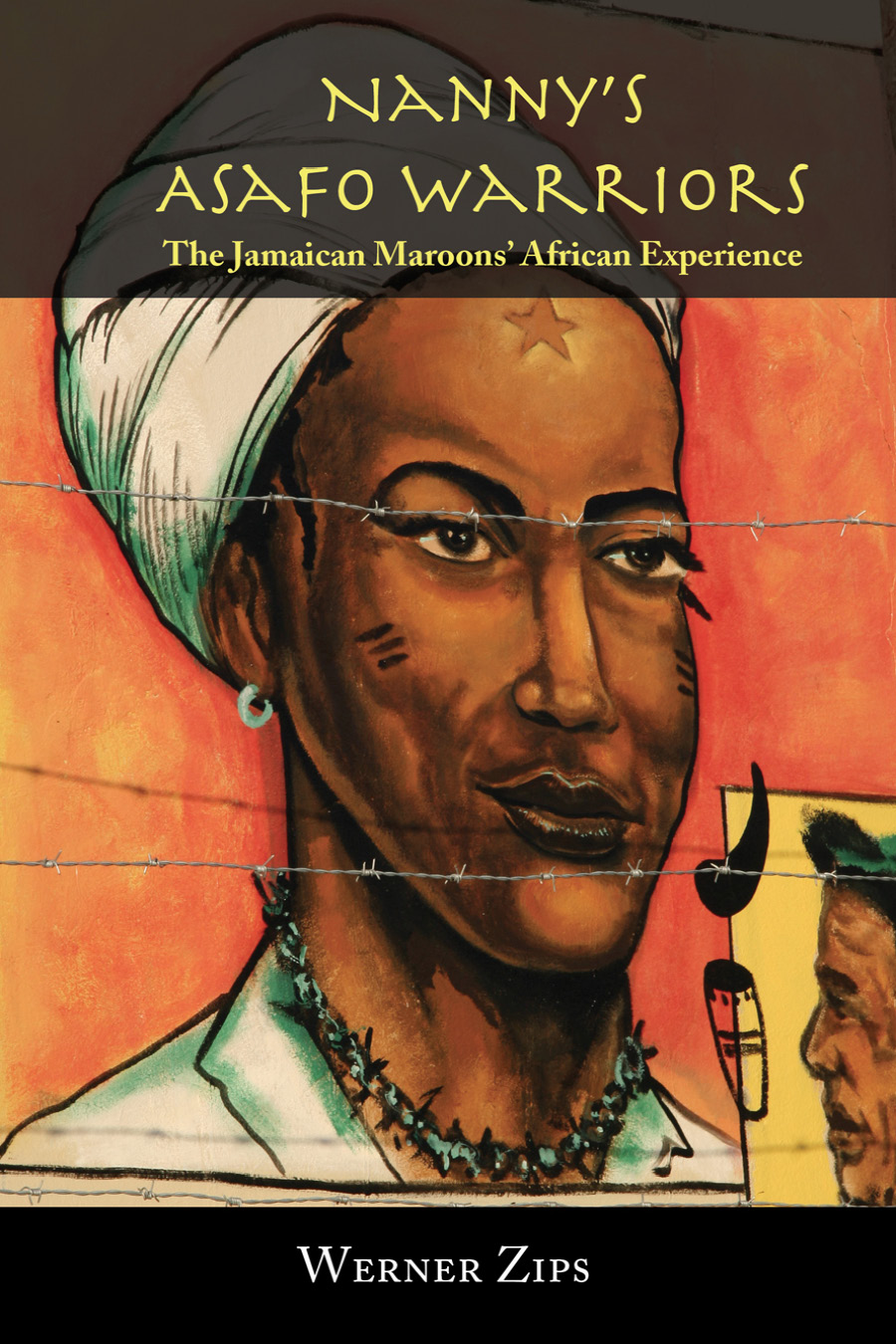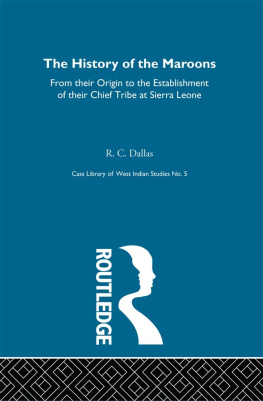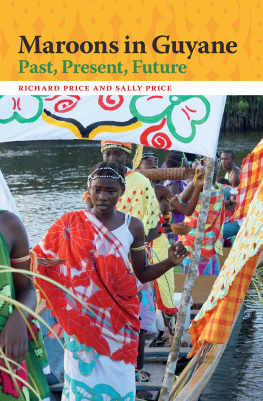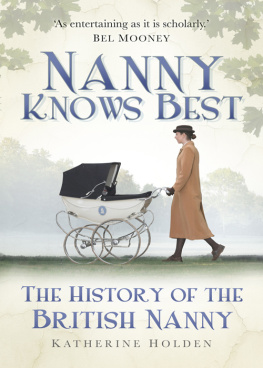
Nannys Asafo Warriors
The Jamaican Maroons African Experience
Werner Zips
Translated from German by
Francesca Deakin

Copyright
Published in Jamaica, 2011 by
Ian Randle Publishers
11 Cunningham Avenue
P.O. Box 686
Kingston 6
www.ianrandlepublishers.com
2011, Werner Zips
ISBN 978-976-637-517-1 (pbk)
Epub Edition @ March/2014 ISBN: 978-976-637-665-9
National Library of Jamaica Cataloguing-in-Publication Data.
Zips, Werner
Nannys Asafo Warriors: The Jamaican Maroons African Experience / Werner Zips; translated from German by Francesca Deakin
p. : ill., maps; cm
Bibliography : p. Includes index
Maroons Jamaica History 2. Maroons Jamaica Legal status, laws, etc.
I. Title
972.92 dc 22
Nannys Asafo Warriors. Copyright 2011 by Werner Zips. All rights reserved under International and Pan-American Conventions. By payment of the required fees, you have been granted the nonexclusive, non-transferable right to access and read the text of this e-book on screen. No part of this text may be reproduced, transmitted, downloaded, decompiled reverse-engineered, or stored in or introduced into any information storage and retrieval system, in any form or by any means, whether electronic or mechanical, now known or hereinafter invented, without the express written permission of Ian Randle Publishers.
First published in German by WUV Vienna University Press in 2003 under the title Das Stachelschwein erinnert sich. Ethnohistorie als praxeologische Strukturgeschichte.
The publication of this book in English is supported by the Austrian Science Fund (FWF) and the Austrian Federal Ministry of Science and Research.
Cover and book design by Ian Randle Publishers
Cover pictures: Manuela Zips-Mairitsch and Werner Zips
All pictures in the book: Manuela Zips-Mairitsch and Werner Zips
Printed and bound in the United States
Frontcover Illustration
Nanny mural in Accompong celebrating the powerful roles of women in African/Maroon societies.
Backcover Illustration
Queenmother of Akropong Traditional Area, Ghana, 1994.
Asafo Companies
Asafo companies are Akan military groups devoted in the past to the defense of the state: sa (war) and fo (people). These companies, which are most highly developed among the Fante of Ghanas Central Region, exert political influence through their military activities and their participation in the selection and enstoolment of the chief. Civic duties include sanitation projects, roadbuilding, policing, fire fighting, and community entertainment. Asafo companies are opened to both men and women, and larger towns may have several companies.
Chart at the Cape Coast Castle Museum in Ghana
Like many other elements of the Maroon cultural heritage, the name of this sacred space (Asafo Ground) is derived from the Akan-speaking peoples of West Africa. In the Asante-Twi and Fanti languages of what is today Ghana, asfo refers to a type of warriors association that continues to play a prominent role in daily life.
Bilby (2006, 140)
Contents
Illustrations
- Hansley Charles Reid (Abeng blower in camouflage), Johnny Kudji Chambers (singer), Edwin Jah Youth Peddie (repeater drum), and Bill Peddie (Gumbe drum) performing Kromanti songs at Peace Cave (1994).
- The British originally identified all Africans shipped from Fort Kormantse as Coromantees a notion later deconstructed by the Maroons as Kromanti culture to identify their common experience.
- Fort Kormantse overlooking the Fante village of Kormantse in the Central Region, Ghana.
- The door of no return in Elmina Castle: exit point to Jamaica and other Caribbean islands for many enslaved Africans.
- Elmina Castle, built in 1482 by the Portuguese and captured by the Dutch in 1637, became one of the major centres of the slave trade until its abolition in 1807.
- View from the Jamaican Cockpit Country en route to Accompong into the plantations around Appleton estate.
- Accompong: the mountain haven and free state of the Leeward Maroons.
- Village in the Asante Region, Ghana close to Kumasi.
- Provision grounds in Accompong, Jamaica.
- Nana Odeneho Numapau II, Paramount Chief of Essumeja pouring libations ( nsaguo ) for the seven Clans of Asante in the sacred Asantemanso forest, the mythical place of origin for the Asante nation, in the company of his linguist, elders and the chief of Asantemanso.
- Bill Peddie at the sacrifical altar in Old Town, the village of the ancestors, a few days after the annual festival commemorating Kojo, Nanny and the original Maroon freedom fighters (1988).
- Peace Cave a few miles from Accompong. According to oral tradition, the peace treaty of 1738/1739 was signed at this location and brought about formal independence from Great Britain.
- A view of Old Town, the place of origin and site of Kojos and other first-time Maroons graves in some way the Jamaican equivalent to Asantemanso in Ghana.
- Blowers of Asante ceremonial horns opening a ceremony in Bonwire, Ghana.
- Hansley Charles Reid, Chief Abeng blower of Accompong in Jamaica, at the opening of Kojos Day, the night before the annual festival.
- Nana Konadu Agyeman-Rawlings giving her opening remarks for the celebration of 300 years Kente weaving under a royal state umbrella ( kyini ), the symbol of unity and rational decision making in Asante.
- Ceremonial Horns play an important role in Ghana for the communication with ancestors whose support is needed at any major event. They speak the language of those who provided the historical basis of the present wealth.
- Cutting up the sacrificial hog ( oprako ) under the umbrella of the Kindah tree on Kojos Day at Accompong, Jamaica (1989).
- The Abeng is blown at the entrance of Peace Cave the same place it sounded freedom some 270 years ago for the Leeward Maroons.
- Natural mystic blowing in the air: The smoke of the roasted sacrificial hog bathes the old Kromanti burial grounds at Kindah in a special light.
- A wooden house on the old Parade Ground (equivalent to the Asafo muster ground in Akan) boasts an artistic imagination of Nanny and a contemporary Soul Rebel.
- A symbolically camouflaged Asafo group from Winneba, Ghana on a ceremonial hunt to honor the deeds of the ancestors.
- The red Asafo group of Winneba during the Deer Hunt Festival (2003).
- Dressed in symbolic camouflage and led by their Abeng blower, a group of Maroons returns from Old Town where they enjoyed their ritual gathering with the ancestors (1997).
- A tired Asafo warrior watches his female and male comrades on their ritual mission to hunt a sacrificial deer for their God Penkye Otu in Winneba, Ghana (2003).
- Young Asafos from Winneba closing ranks with sticks to clear the way on their ceremonial hunt (2004).
- Nana Rowe (in red and white dress) on her last physical procession through Accompong in 1997. Right behind marches her nephew Meredie Rowe, the then Colonel of Accompong.
- Clear road oh, all the forces are coming, chant the Maroons of Accompong on their procession from Kindah tree to the town centre.
- The annual procession on Kojos Day through Accompong shares numerous structural features with Durbars in Akan societies: It demonstrates togetherness of the living, unity with the ancestors and the will to constant political corporateness in the future.
Next page










